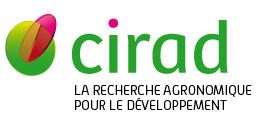Ethnolinguistic and genetic diversity of fonio (Digitaria exilis) in Senegal
Magatte Diop B., Gueye M.C., Leclerc C., Deu M., Zekraoui L., Calatayud C., Rivallan R., Kaly J.R., Cissûˋ M., Piquet M., Diack O., Ngom A., Berger A., Ndoye I., Ndir K., Vigouroux Y., Kane Ndjido A., Barnaud A., Billot C.. 2023. Plants, People, Planet : 13 p..
DOI: 10.23708/5WDKS1
DOI: 10.1002/ppp3.10428
Societal Impact Statement Fonio (Digitaria exilisãKippistãStapf) is a neglected cereal crop that plays a crucial role in the food and nutritional security of sub-Saharan populations. Currently threatened with extinction in many countries, fonio, like other minor species, could help give insights into the history of African agriculture and provide clues to past social interactions. Highlighting and preserving genetic diversity that can be used to develop improved varieties improves food security. By recognizing the role of indigenous people and local communities (IPLCs) in agrobiodiversity creation and management, this study provides support for strengthening the rights of rural communities and promoting their food and seed sovereignty as outlined in the United Nations UNDROP Declaration. Summary Fonio (Digitaria exilis) is a neglected cereal crop that plays a crucial role in the food and nutritional security of sub-Saharan populations. It is an excellent candidate to diversify agricultural and food systems beyond Africa because of its adaptability and hardiness. However, fonio is threatened with extinction and the factors that organize its genetic diversity remain unknown, despite the fact that this knowledge is necessary to define conservation strategies and uses to achieve sustainable agriculture. Here, we combined social anthropology and population genetics analysis of 158 fonio landraces, thereby generating insight into the genetic diversity, population structure and evolutionary history of fonio cultivation in Senegal. We noted a spatial structure of genetic diversity at two embedded levels, with the first corresponding to the genetic differentiation between ethnic groups and the second to the demographic history of the Mande and Atlantic Congo linguistic families. Selection and seed exchange practices have contributed to shaping fonio genetic diversity at the ethnic level, while the migration of Fulani people over the last 500ô¢years has fragmented the Mandinka
Mots-clûˋs : digitaria exilis; variation gûˋnûˋtique; sûˋcuritûˋ alimentaire; groupe ûˋthnique; gûˋnûˋtique des populations; sûˋnûˋgal
Documents associûˋs
Article (a-revue û facteur d'impact)
Agents Cirad, auteurs de cette publication :
- Berger Angûˋlique — Bios / UMR AGAP
- Billot Claire — Bios / UMR AGAP
- Calatayud Caroline — Bios / UMR AGAP
- Leclerc Christian — Bios / UMR AGAP
- Rivallan Ronan — Bios / UMR AGAP
